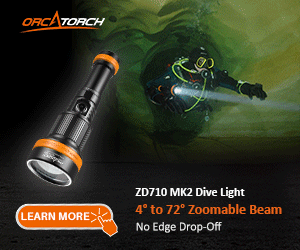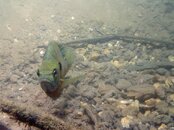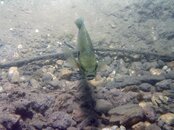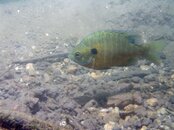Alright, i have an older version of elements at the house but have no idea how to use it so i never loaded on my win7 machine. RWE, you just made me believer out of me in using elements to correct color. Any chance you can write a simple how to on which tabs u clicked to correct the color? How hard was it and hoe much time did u have to spend correcting it?
You are using an out of date browser. It may not display this or other websites correctly.
You should upgrade or use an alternative browser.
You should upgrade or use an alternative browser.
OLY C-8080 and PT-023 housing repair
- Thread starter tripntx
- Start date
Please register or login
Welcome to ScubaBoard, the world's largest scuba diving community. Registration is not required to read the forums, but we encourage you to join. Joining has its benefits and enables you to participate in the discussions.
Benefits of registering include
- Ability to post and comment on topics and discussions.
- A Free photo gallery to share your dive photos with the world.
- You can make this box go away
Alright, it's Adobe Photoshop Elements 5.0 I have, just loaded it on my laptop and simply clicked on Smart Fix in quick fix and was amazed at how much better they look. One of these days I need to start watching some of the tutorials in Digital Darkroom. For now I will just use Smart Fix and/or Temperature and Tint to correct my pics some.
Attachments
Good touch up with the Elements. I have PS Elements as well, but I get the same result for my simple needs with the free Picaso from Google. the "I feel lucky" tab on Picaso must correspond to the "smart fix" button on PS. PS just is much more time consuming to my limited skilll level with retouching programs. We started talking about this in another thread on this site.
rwe
Contributor
Alright, i have an older version of elements at the house but have no idea how to use it so i never loaded on my win7 machine. RWE, you just made me believer out of me in using elements to correct color. Any chance you can write a simple how to on which tabs u clicked to correct the color? How hard was it and hoe much time did u have to spend correcting it?
Sorry to take so long to respond but I have been on business travel. I do not use auto Smart Fix a lot for underwater pictures because it usually lightens the shadows more than I want. I sometimes use Adjust Smart Fix but, again, this usually works better on above water pictures.
How much time you spend depends on how much you like the picture and whether it needs much editing. Some require very little; some require a lot. All pictures are somewhat different but here is a general discussion of my process.
1. I usually open about 10-12 pictures at a one time for editing. I always shoot in RAW underwater so all pictures start in the Adobe Elements 6 RAW screen. I select all and change from 8 to 16 bit (depth-under picture).
2. Then I select the first picture and adjust sharpening to about 30-45 (amount and detail) with a radius of 1.0. Occasionally, but not often, I go back and adjust these at the end after enlarging a portion I am trying to make clearer.
3. Next I start at the top and adjust white balance (temperature and tint). If the subject was lit by the strobe not much if anything is required here. I usually end up at 5000-6000K and tint of 20-30. If it is ambient light shot then it usually has a cyan tint that is difficult to get rid of. There is a white balance eyedropper above the picture that can sometimes do wonders with really large temp and tint changes. However, it does not deal as well if part of picture is lit by strobe.
4. I click back and forth on auto and default to decide which one to start with for the exposure editing. Usually start with auto. Then go to bottom and increase clarity to usually 30-35 but sometimes a little higher. Then play with other sliders depending on what picture looks like. Black can sometimes make a big difference but you have to be very careful or it will make too contrasty. Sometimes exposure or brightness needs to be reduced if starting with auto. The c-8080 tends to slightly overexpose the white areas so sometimes I use recovery to try to compensate.
5. After going through each opened picture, do select all and open images. When they open in secondary editing screen you will note that some of the auto buttons are not active. I make them active later in the editing process but if you want them active immediately, then do select all and change to 8 bit before leaving RAW screen.
6. I usually start with auto levels. This frequently makes the biggest change in the color/contrast/etc. If I dont like what I get then I go to adjust lighting/levels and use eyedroppers and sometimes sliders (to change colors). Note that you can pick one color at a time and use sliders if color needs adjustment.
7. Occasionally, I use adjust color, color variations or hue/saturation to tweak. Color variations are easier than hue/saturation. On rare occasion, use color curves.
8. Sometimes I use magic wand or magic lasso to select a part of picture to edit separately. This is usually to sharpen or change color. If there is a large amount of backscatter in background areas then I sometimes grab the background with magic wand and do filter/noise/dust&scratches to reduce but this will give some artifacts at the interfaces so look at them closely when adjusting sliders.
9. I mostly use the spot healing tool or clone tool to get rid of backscatter. When you try to use one of these tools it will tell you that the depth must be converted to 8 bit to use. After telling it to convert, all the auto tools become active. Zooming picture somewhat before using healing tools makes them work much better. How much zoom depends on picture and size of backscatter spots.
10. I usually try auto contrast but frequently go to lighting/contrast and give a little more contrast.
11. I sometimes (but not too often) also use unsharp mask on a part of the picture that has been grabbed by magic wand or lasso. I usually try this when I really like the picture but the resolution is not satisfactory. Sometimes it helps; sometimes not.
12. I usually try auto color correction and auto smart fix but usually dont like and edit/undo.
My learning process has all been trial and error. There are probably better processes that the experts can tell you. Bottom line is try many things. Get a picture you like. Go back 6 months later to a few you really liked and you will probably want to re-edit and get better picture because you have learned new techniques/buttons to help.
Thanks for all the information! Will move it into a word document and print it out so I can start trying my hand at editing.
Took some pics in RAW with my Cannon A720is CHDK in August while diving on the Texas Clipper. The only problem is my Elements 5.0 doesn't seem to recognize the raw .crw files from my camera. Posted a question in other section, so hopefully the problem can be resolved.
Took some pics in RAW with my Cannon A720is CHDK in August while diving on the Texas Clipper. The only problem is my Elements 5.0 doesn't seem to recognize the raw .crw files from my camera. Posted a question in other section, so hopefully the problem can be resolved.
rwe
Contributor
Thanks for all the information! Will move it into a word document and print it out so I can start trying my hand at editing.
Took some pics in RAW with my Cannon A720is CHDK in August while diving on the Texas Clipper. The only problem is my Elements 5.0 doesn't seem to recognize the raw .crw files from my camera. Posted a question in other section, so hopefully the problem can be resolved.
My Elements 6 didn't recognize my CR2 files from my Canon 450D which I bought about a year ago (no underwater housing). I downloaded a plug-in from the Adobe site that updated the RAW converter to include CR2 files. Don't know if there is one that will work for CRW files or not but the Adobe location for the available plug-ins is: Adobe - Photoshop Elements : For Windows . There is also an Adobe Elements forum here that might help: Adobe Forums: Forum: Photoshop Elements .
I'm enjoying playing with PS Elements, good winter project.
Listed all my Olympus C-8080 gear on Ebay tonight (just look for texcrasher).
Selling in groups:
Camera and housing together; wide angle port and wide angle lens together; tele lens by itself. Once this 8080 stuff moves, then I'll start selling off my Cannon A720IS, cannon housing, and ikelite housing. When it's all gone, then I'm going to look at upgrading from point n shoots.
Thanks for all your help on my getting a start using Elements.
Listed all my Olympus C-8080 gear on Ebay tonight (just look for texcrasher).
Selling in groups:
Camera and housing together; wide angle port and wide angle lens together; tele lens by itself. Once this 8080 stuff moves, then I'll start selling off my Cannon A720IS, cannon housing, and ikelite housing. When it's all gone, then I'm going to look at upgrading from point n shoots.
Thanks for all your help on my getting a start using Elements.
Similar threads
- Replies
- 2
- Views
- 497
- Replies
- 1
- Views
- 905
- Replies
- 3
- Views
- 1,306






